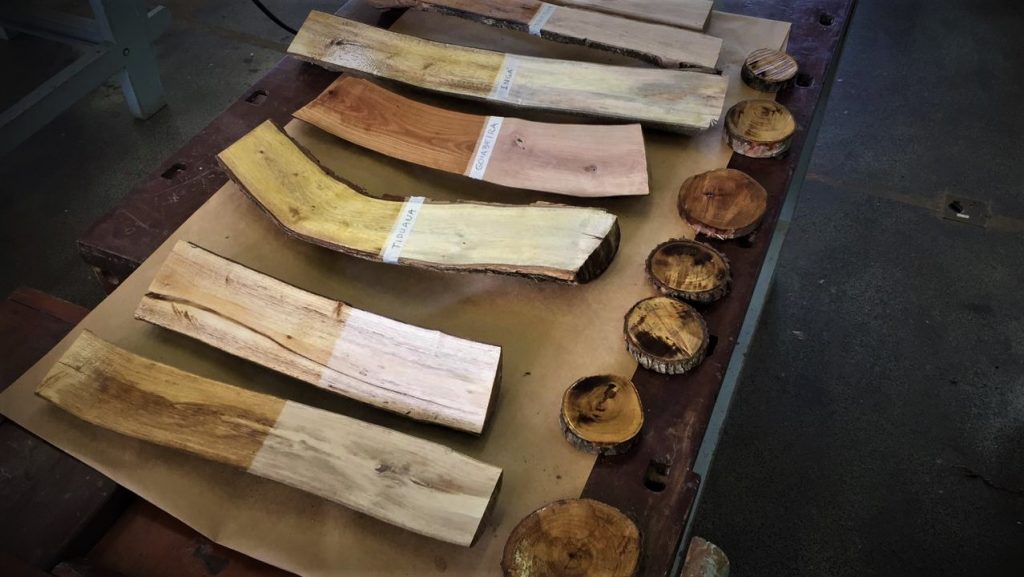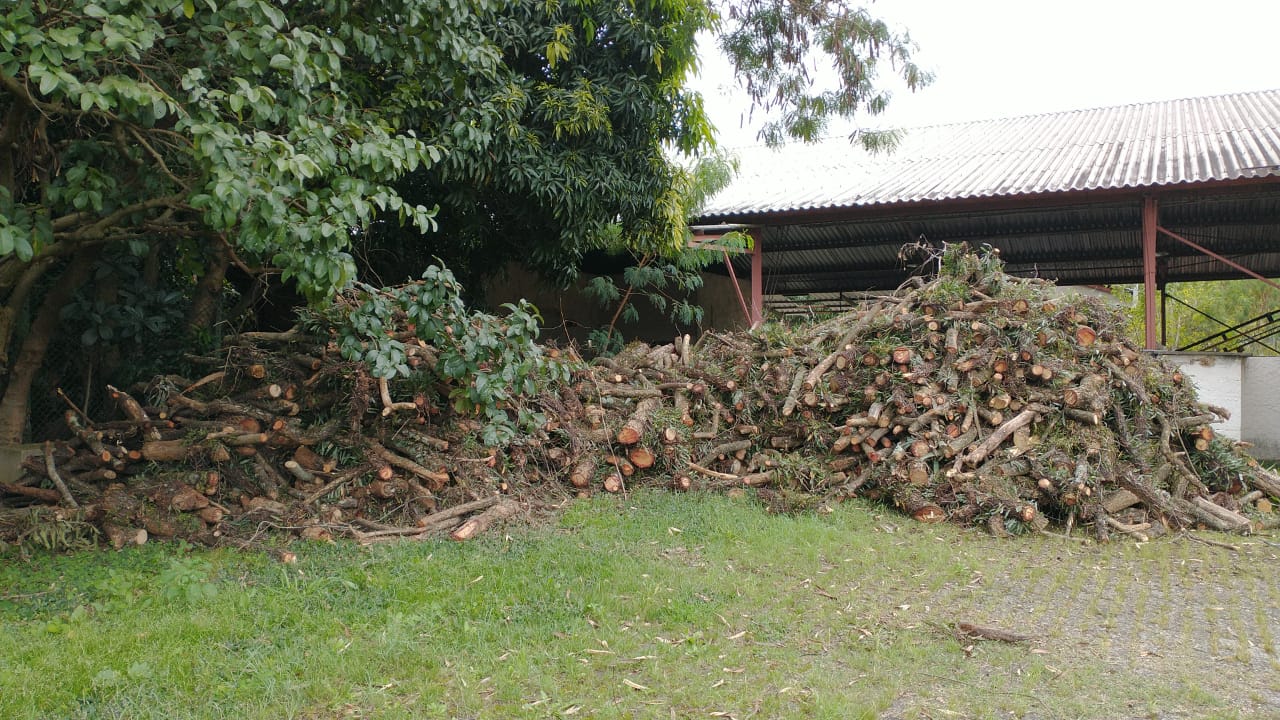Selection
Classification types
After cutting the branches and trunks, it is necessary to separate the waste so that each type has a more suitable destination. The residues are basically characterized by leaves and woody material, which can vary in diameter. Meira (2010) classifies the branches and trunks into 4 diameter categories: from 0 to 8 cm, from 8.1 to 15 cm, from 15.1 to 25 cm and over 25 cm.

The separation into different diameters, as well as the separation by species, may indicate more suitable destinations. Larger diameter pieces, sawn into boards and rafters, can be used to create furniture and construction components, while smaller diameter pieces can be used to create small wooden objects (POMs), and it is always better to cut pieces as long as possible, in order to increase the possibilities of use and reduce the number of cracks.
The use of the lathe, in addition to sawn wood, is also an outlet for the use of irregular pieces, and very small residues can be aggregated in composite materials. For rotten or very heterogeneous waste, the best way out is the traditional methods of disposal: creation of organic compost and generation of energy.


